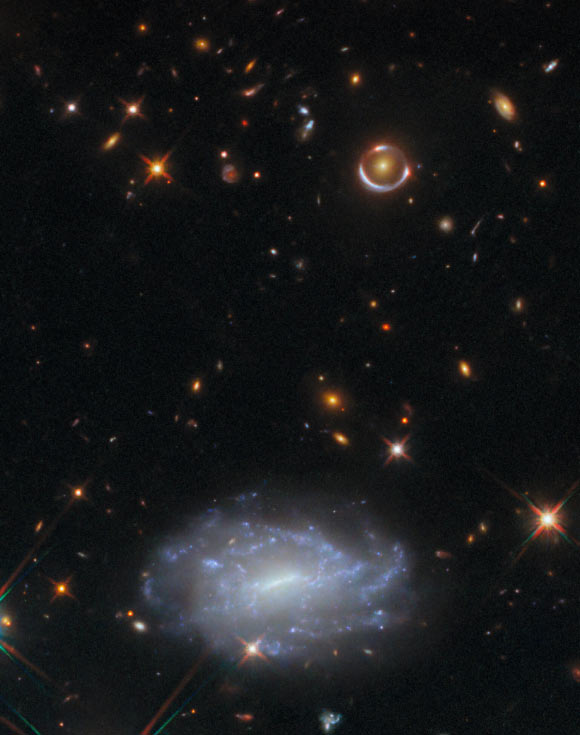This new image from the Wide Field Camera 3 (WFC3) aboard the NASA/ESA Hubble Space Telescope shows a tiny patch of sky in the constellation of Hydra.
Behind a bright star in the lower part of the Hubble image is a galaxy named LEDA 803211.
“At 622 million light-years distant, LEDA 803211 is close enough that its bright galactic nucleus is clearly visible, as are numerous star clusters scattered around its patchy disk,” the Hubble astronomers said in a statement.
“Many of the more distant galaxies in this frame appear star-like, with no discernible structure, but without the diffraction spikes of a star in our Milky Way Galaxy.”
“Of all the galaxies in this frame, one pair stands out in particular: a smooth golden galaxy encircled by a nearly complete ring in the upper-right corner of the image.”
“This curious configuration is the result of gravitational lensing, in which the light from a distant object is warped and magnified by the gravity of a massive foreground object, like a galaxy or a cluster of galaxies.”
“Albert Einstein predicted the curving of spacetime by matter in his general theory of relativity, and galaxies seemingly stretched into rings like the one in this image are called Einstein rings.”
“The lensed galaxy, whose image we see as the ring, lies incredibly far away from Earth: we are seeing it as it was when the Universe was just 2.5 billion years old.”
“The galaxy acting as the gravitational lens itself is likely much closer,” they noted.
“A nearly perfect alignment of the two galaxies is necessary to give us this rare kind of glimpse into galactic life in the early days of the Universe.”
This color image was made from separate exposures taken in the ultraviolet, visible and infrared regions of the spectrum with Hubble’s WFC3 instrument.
It is based on data obtained through six filters. The color results from assigning different hues to each monochromatic image associated with an individual filter.
Read the full article here

